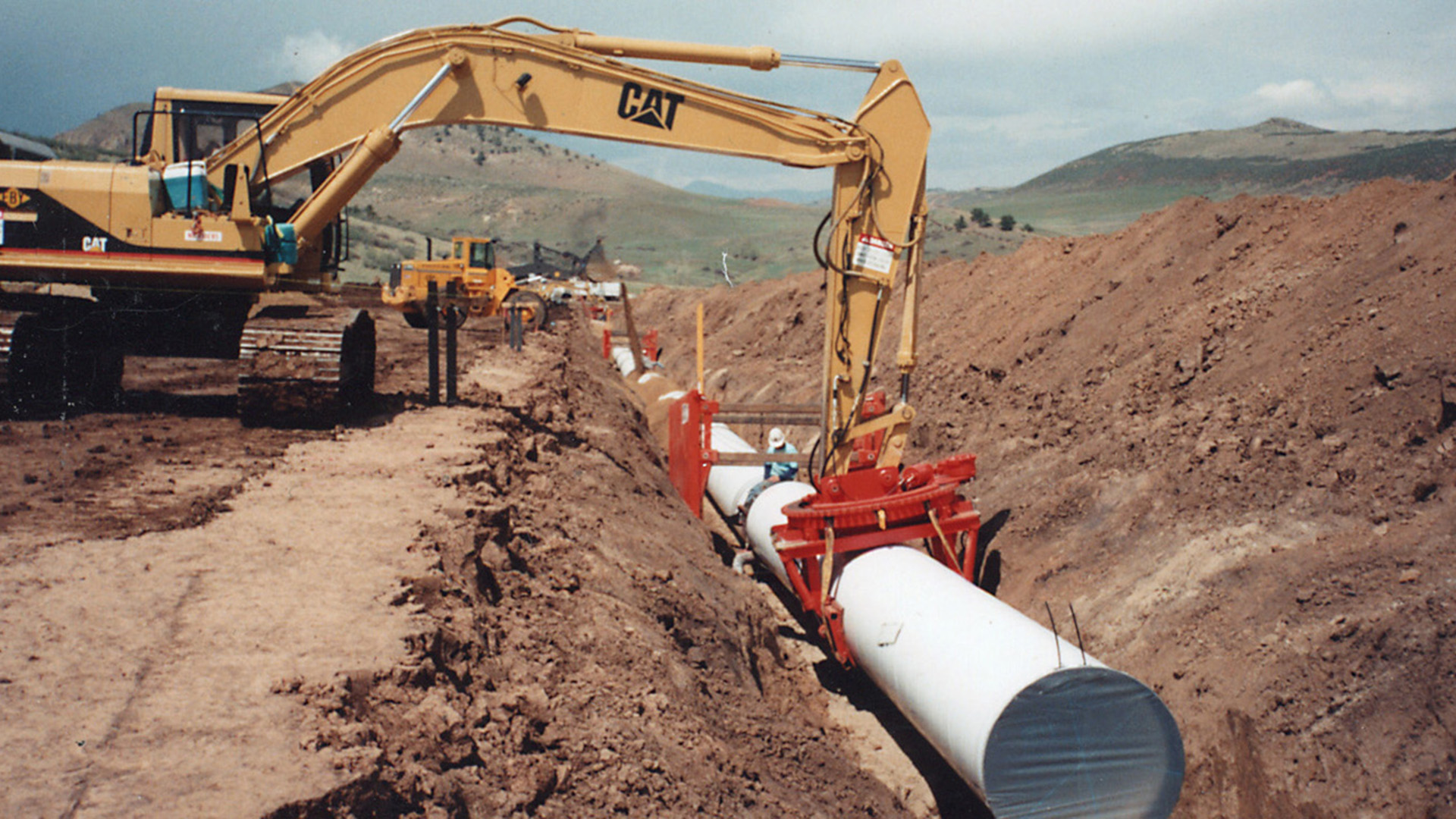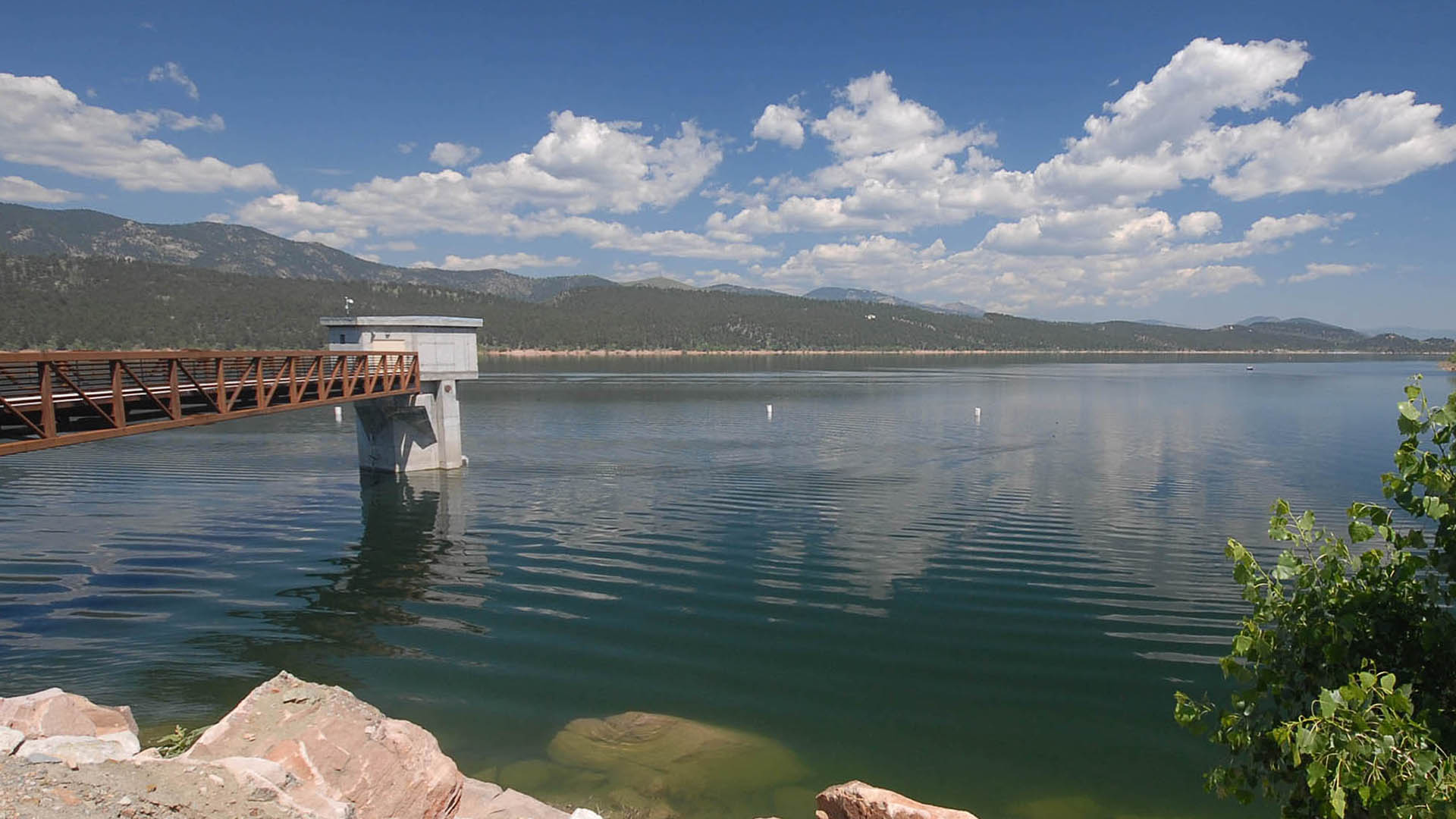Southern Water Supply Project
Delivering Water Across Northeastern Colorado
The Southern Water Supply Project (SWSP) pipeline transports water from the Colorado-Big Thompson and Windy Gap projects over a 110-mile route, beginning at Carter Lake and serving multiple communities in Northeastern Colorado. Planning for year-round water deliveries through this pipeline began in 1991.
Broomfield’s Need for an Alternate Water Source
In the early 1990s, Broomfield relied on the Great Western Reservoir for half of its water supply. However, the reservoir’s location downstream from Rocky Flats—a former nuclear weapons facility—raised concerns about potential contamination. In response, the U.S. Department of Energy committed to providing Broomfield with a safer, alternative water source.
At the same time, a regional study projected rising water demand in the southern portion of Northern Water’s service area. Communities facing stricter water quality standards required a dependable, year-round supply.
The proposed SWSP pipeline addressed Broomfield’s needs while also offering a cost-effective solution for other communities. By sharing a single pipeline, participants avoided the higher costs of building individual systems.

Pipeline Construction and Expansion
Construction of the first phase—from Carter Lake to Broomfield—began in 1993. The final 41-mile segment, stretching from Platteville to Morgan County, was completed in 1999. The total cost of construction reached $68 million.
To meet growing water demands, especially during peak summer months, several pump stations were added:
- West Longmont Pump Station (2003)
- Broomfield Pump Station (2005)
- Eastern Pump Plant (2022)
Together, these additions increased the pipeline’s capacity by 80 percent.
Project Ownership and Participants
Northern Water owns and operates the SWSP pipeline through the Southern Water Supply Project Water Activity Enterprise. While Northern Water manages the system, each participant holds contractual rights to the water and contributes proportionally to the costs of operations, maintenance and replacement.
Current project participants include: Fort Morgan, City and County of Broomfield, Hudson, Berthoud, Longmont, Erie, Louisville, Morgan County Quality Water District, Little Thompson Water District, Central Weld County Water District and Superior.
Expanding Reliable Water Delivery Across the Front Range
As growth continued along the Front Range, Boulder, Left Hand Water District, Berthoud, and Longs Peak Water District partnered to fund Phase Two of the Southern Water Supply Project. The goal: to ensure secure, year-round water deliveries for their communities. Previously, these entities relied in part on open, seasonally operated canals—systems that were vulnerable to water quality concerns and inconsistent availability. The new pipeline offered a more dependable and higher-quality solution.
Construction and Investment
Construction of Phase Two began in 2018 and was completed in early 2020.
- Construction costs: Approximately $38 million
- Total project costs (including design, permitting, administration, management, and right-of-way): Approximately $44 million

Pipeline Route and Function
The Southern Water Supply Pipeline II spans 20 miles from Carter Lake to the Boulder Reservoir Water Treatment Plant.
- The first 12 miles run parallel to the original Southern Water Supply Project pipeline (built in 1995), extending from Carter Lake to St. Vrain Road near Longmont’s Vance Brand Municipal Airport.
- The final 8 miles serve Left Hand Water District and the Boulder Reservoir Water Treatment Plant, completing the connection for year-round water delivery.
Outlet Enhances Year-Round Water Delivery from Carter Lake
As the second-largest reservoir in the C-BT Project, Carter Lake plays a vital role in providing reliable municipal and industrial water deliveries throughout the year. Originally constructed in July 1950, the reservoir’s outlet structure served the region well for decades, primarily delivering water during the irrigation season (April through October) to agricultural users. During the off-season, crews could perform necessary maintenance and repairs while the outlet was inactive.
However, as demand for consistent, year-round water deliveries increased—and the original outlet aged—Northern Water, in coordination with the U.S. Bureau of Reclamation, constructed a new outlet in 2008. Purpose-built for year-round operations, the new outlet enhances system reliability and operational flexibility.
Outlet Features and Investment
The new outlet structure, a $12 million investment, includes:
- A 110-foot-tall multi-level intake tower
- An 800-foot-long tunnel
- A 400-foot-long above-ground penstock connecting the outlet to the St. Vrain Supply Canal
This modern infrastructure allows Northern Water to better meet growing municipal and industrial water needs while maintaining the integrity and performance of the original outlet system.

